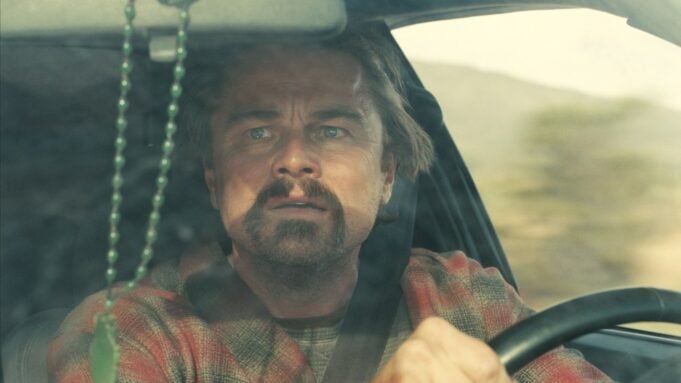It’s no big shock to see that commentators on the right, the far right, and the extreme alt-right (I think that covers the waterfront), from Ben Shapiro to film critic Armond White, have pounced on “One Battle After Another,” accusing it of being a “left-wing” movie made for left-wing elites sitting in their left-wing bubble. The forces on the right, led by President Trump, will now say that about almost anything. They treated yesterday’s No Kings protest, with its massive surge of outraged citizens, as if it were some lunatic-fringe collection of hippie terrorists.
It was a tad more surprising to see the same criticism of “One Battle After Another” made by Bret Easton Ellis, who thinks that reviewers have hailed Paul Thomas Anderson’s film, and overpraised it, “because it really aligns with this kind of leftist sensibility.” Ellis later added on his podcast, “You have the left and the entertainment press propping this movie up to such an absurd degree that it felt unnatural.” I consider myself a fan of Ellis’s (I was a guest on his podcast once), and relish the independence of his voice, so the fact that he isn’t wild about “One Battle After Another” is fine with me. I’m all for debate. But I think that tagging the film with the “leftist” label feeds into the very same cliché mindset that Ellis thinks he’s fighting.
What’s more, if you believe, as I do, that part of the power of “One Battle After Another” is that it is not, in fact, a left-wing movie, it’s important to recognize how that misperception has been fed by a lot of people…on the left. The movie, which is set in an authoritarian America that resembles the one we could be heading toward (it anticipates what the country might start to look like if Trump invokes the Insurrection Act), is centered, for a while, on a ragtag band of revolutionary guerrillas. And since the movie is certainly on their side, I think a lot of the attitude of the entertainment media has been to reflexively treat “One Battle After Another” as if the film itself were raising a revolutionary fist — and as if there were something “left-wing” about attacking authoritarianism. There is not.
This isn’t merely a matter of semantics. In a strange way, the lionization of “One Battle After Another” as a cinematic manifesto, a movie that sees itself as part of “the resistance” and tips its hat to the glory of being a “radical,” has fed directly into the skewed right-wing view of the film. At times, it’s almost as if the right and the left agree on what “OBAA” is: a romantic salute to revolution. They just don’t agree on where they come down on it.
But see, that word “revolution” is more loaded than people think. And so is “left-wing.” They may just be words, but they have helped to create the lens through which “One Battle After Another” is being viewed. As someone who loved the film, and found it to be a potent statement, but does not consider it a “left-wing” vision, I thought I would try to clarify why “One Battle After Another” should really escape that label, regardless of which side is doing the labeling. Here’s why.
The film borrows the iconography of late ’60s/early ’70s “revolutionaries.” But that world, and the movie’s world, could not be more different. In the film’s opening section, the underground rebels, known as the French 75, are characterized in a way that nods to the counterculture radicals of 55 years ago. One of the film’s most indelible images is that of Perfidia Beverly Hills (Teyana Taylor), in her khakis and boots and open plaid shirt and wool cap, firing a machine gun balanced on her pregnant belly — an image that looks like a Black Panther/Symbionese Liberation Army fever dream. The French 75 launch their insurrectionary acts (bombings, bank robberies, breaking into an immigration-detention facility to free the prisoners) with an overthrow-the-system bravura that nods to that earlier time.
But here’s the difference. The Black Panthers fought for Civil Rights, but by the late ’60s and early ’70s many of the radicals of the counterculture had the stated goal of overthrowing, you know…America. At the time, this was regarded by the overwhelming majority of Americans, including liberals, as an extreme and even crackpot idea. By the time of the rise of the Weather Underground (whose great achievement was accidentally blowing up a Greenwich Village townhouse, killing three of their own members), many of the radicals of the era were starting to look not just extreme but scurrilous.
Love Film & TV?
Get your daily dose of everything happening in music, film and TV in Australia and abroad.
So why does “One Battle After Another” pay homage to them? Because they possessed a militant impulse that struck a chord in the popular imagination. Yet the two situations could hardly be more different. At the end of the ’60s, America was not an authoritarian regime. “One Battle After Another,” by contrast, takes place in a police state where the cops and the military have joined forces to patrol an autocratic society, with basic rights stripped away. That is what the French 75 are rebelling against. Does that make them “left-wing”? No, it makes them freedom fighters who are trying to crack a fascist nation back open.
How could anyone think the film starts in 2008? The timeline of “One Battle After Another” might be a little confusing, for several reasons. The film is loosely based on the Thomas Pynchon novel “Vineland,” which is set in the Reagan ’80s; Anderson, looking ahead (the film was shot last year), reconfigured the book into a dystopian projection of what a Trump regime might look like. But a host of progressive critics and writers, obsessed with the idea that the movie is about what’s going on right now, man, have stated that the heart of the action is set quite specifically in the present day. That would mean that the opening 45 minutes, which is set 16 years before that (when the French 75 are going wild), would take place in 2008. But the vision of oppression the movie conjures has nothing to do with the vibe of 2008 (the start of the Obama era). And the power of “OBAA” is that it’s not a literal vision of today. It’s a spiritual projection of where we could land.
The film’s ragtag band of radicals are not glorified. On the contrary, they’re shown to be deeply flawed. This, I think, gets to the heart of why Paul Thomas Anderson has made a movie about radicals that is not, in itself, a piece of firebrand “radicalism.” How imperfect are the French 75? In many ways, the film’s key character is Perfidia Beverly Hills, who’s portrayed as a ruthlessly charismatic rebel leader, until she has her baby (the secret father is Sean Penn’s ramrod-rigid Col. Lockjaw), at which point her lover and partner, Bob Herbert (Leonardo DiCaprio), says: We’re a family now. Our priorities have to pivot away from revolution. Anderson, who has four children with Maya Rudolph, stages this moment with notable conviction. It’s the first thing that makes us take notice of DiCaprio’s character as a morally complex being. But Perfidia is having none of it. She’s placed (by Lockjaw) in the Witness Protection Program, and then hustles over the border to Mexico, leaving the revolution — and, more to the point, her child — behind. The movie does not respect this.
Cut to 16 years later. The revolution is in tatters, and Bob is a drug addict sitting around in his bathrobe. He is still, in his way, a devoted father, but apart from that he’s blitzed, navel-gazing, dissipated. This is not a revolutionary we can exactly salute. What’s more, the film’s funniest joke has been widely misinterpreted by media progressives. When Bob calls the French 75 headquarters and keeps failing to remember the proper espionage code phrase (the answer to the question “What time is it?”), many have interpreted this to simply be a sign of how fried his brain is. But that wouldn’t be a funny joke. DiCaprio’s acting in this section — his steam-out-the-ears frustration at the fact that the operator won’t give him a pass on remembering the damn code — is brilliant, and puts the audience right on his side. The bureaucratic fussiness of the operator is clearly meant to be a satire of doctrinaire left-wing rigidity.
The attack on “OBAA” for being “left-wing” could almost be an early salvo in the Oscar race. Speaking of battles, the Academy Awards already look like they’re shaping up to be a four-way war: “One Battle After Another” vs. “Hamnet,” with “Sinners” and “Marty Supreme” coming up on the side. Attacking “OBAA” on ideological grounds sounds like something right out of the anti-“Green Book” playbook. I don’t think that’s where the argument ultimately came from, but it’s one that could easily be exploited by opposing forces.
What Is “One Battle After Another” Actually About? It’s the Authoritarianism, Stupid. If you scanned the media coverage of it, you might think “One Battle After Another” was the story of a revolution. It is (sort of). But not really. For 45 minutes or so, it looks like that. But the guerrilla rebellion fails, and while Bob is helped out by Sensei Sergio St. Carlos (Benicio del Toro), the leader of an underground railroad for immigrants, the revolution comes down to a father rescuing his daughter. That’s emotionally powerful, but the portrayal of “resistance” is less potent than the film’s portrayal of authoritarianism itself, and of how directly that connects with what’s happening in America today. The real revolution going on in this country now is the Christian nationalist revolution — an attempt to upend the American Dream and replace it with a theocracy. And the film dares to unveil that; its portrait of the Christmas Adventurers is a chilling vision of hate. That’s all the message the movie needs: that this is happening, that the right-wing revolution is on. And that there are people in America who still want to stop it. To suggest that portraying all that is “left-wing,” even if that’s the side you think you’re on, is to play right into the propaganda. It’s to win the battle of self-righteousness and lose the war.
From Variety US































